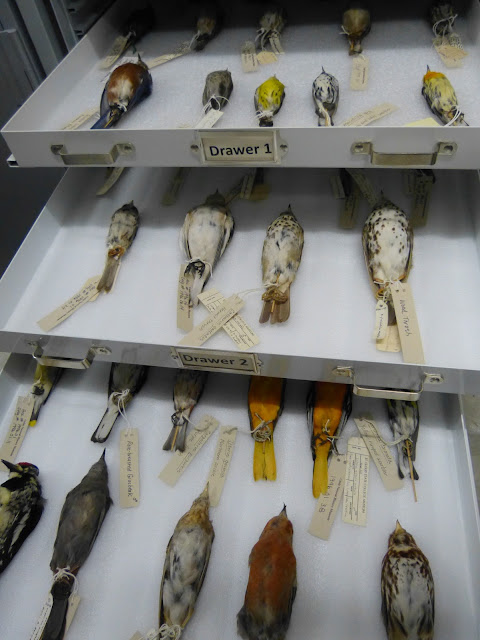Specimen of the Month: On Animals Preserved in Drawers
If visitors were allowed to rummage through the mysterious cabinets in specimen storage, they would likely pull open a drawer to find a cornucopia of lifeless owls, finches, or even mice. These preparations are less familiar than conventional taxidermy mounts which we typically find on display. In fact, study skin preparations rarely make it out of their cabinets, and for good reason.
Study skins are simple preparations of dead animals. The skin and some other structures--like feathers, fur, beak, etc.--are included and the animal is stuffed with cotton then sewn up. The resulting form allows us to better fit specimens in storage, much like tightly-packed cigars in a box.
During my first venture into the realm of study skin preparation, I worked on two flying squirrels. I remember viewing the process as being so simple while I worked through the evening, but by the next day I realized that I fell to the common mistake of overstuffing my animals. Thankfully, the appearance of a study skin is much less important than the presence of identifying features.
Study skins have long been used for scientific research. They play an important role in the definition of species, as new specimens are regularly compared to those already described and stored. For this reason, a museum may maintain many study skins for any one species.
Such studiously maintained preparations may outlive the species itself. During a visit to the collection of the Chicago Academy of Sciences/Peggy Notebaert Nature Museum last spring, I watched on with wide eyes as collections staff pulled out drawers containing study skins of extinct birds. Our group marveled at rows of Carolina Parakeets and Passenger Pigeons, and speculated for a moment on the fate of the Ivory-billed Woodpecker after viewing one just inches away.
The research that can be conducted on study skins will hopefully improve our ability to combat species extinction in the future. As time goes on, the value of our own study skins should only increase.




